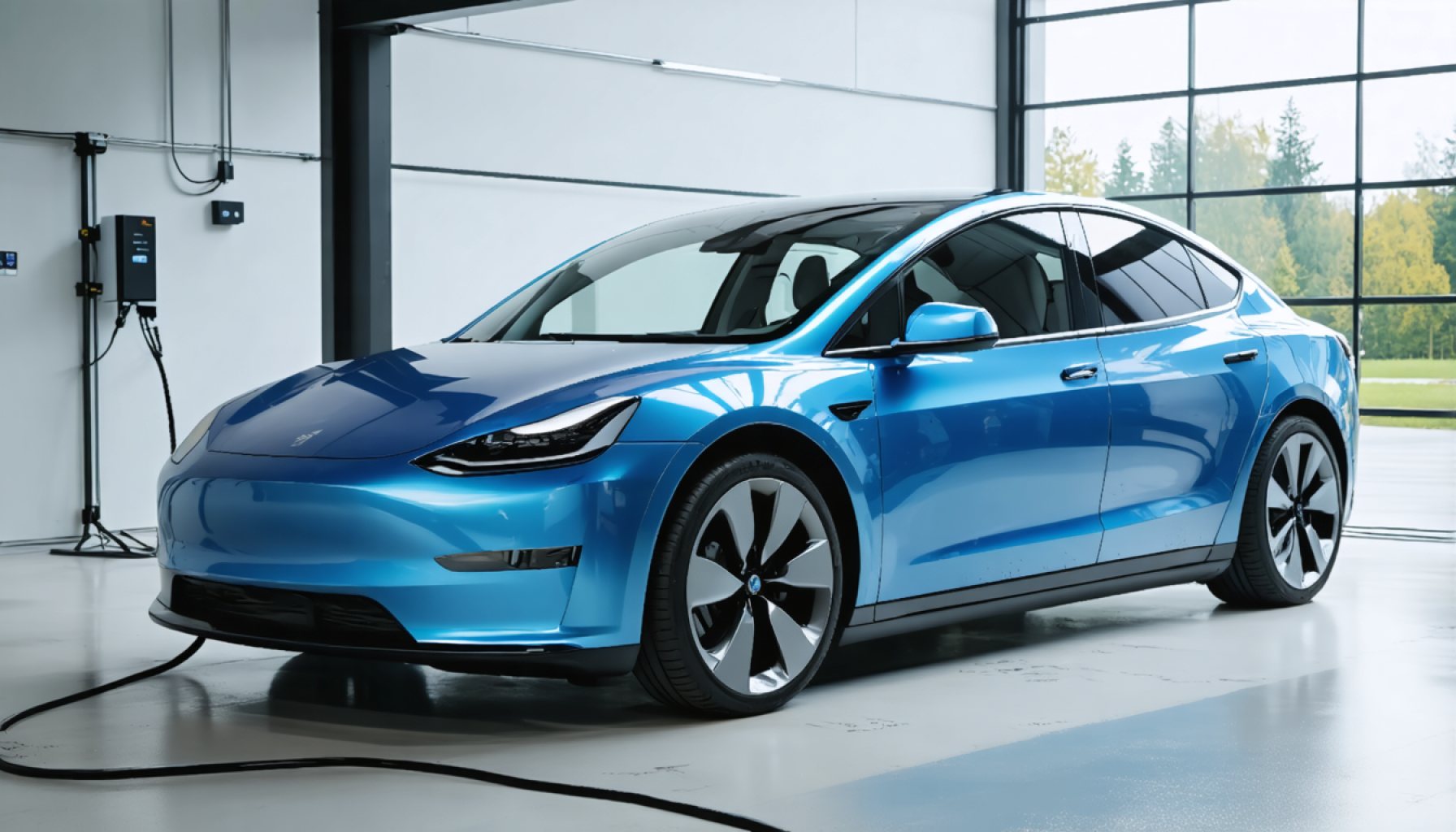- The European Union and China are exploring a minimum price strategy for Chinese electric vehicles, potentially replacing high tariffs to ensure market fairness and accessibility.
- This collaboration aims to reshape trade dynamics, benefiting both economies and preventing disruption to Europe’s green transition.
- China leads the electric vehicle market with 11 of the top 20 global manufacturers, surpassing Japan as the largest auto exporter.
- Strategic partnerships, such as Volkswagen with Xpeng and Leapmotor with Stellantis, highlight a trend towards cooperation over competition.
- Lower production and energy costs in China provide competitive pricing, influencing negotiated terms with the EU.
- Chinese automakers view the EU as a vital market, expanding operations into countries like Poland, Switzerland, and Hungary.
- The evolving dialogue may replace tariffs with minimum price agreements, fostering sustainable innovation and broader market access.
The European Union is poised for a tectonic shift in its automotive landscape, driven by new dialogues with China regarding electric vehicles (EVs). As the EU initially prepared to levy hefty tariffs on Chinese EV imports—a move expected to skyrocket prices and stymie market accessibility—recent developments suggest an emerging compromise that could benefit both sides.
Rather than pursuing a path of elevated tariffs, the EU and China have agreed to explore a minimum price strategy for Chinese-manufactured electric vehicles. This potential agreement, revealed by European Commission representatives, highlights a collaborative effort to reshape trade dynamics. The dialogue encourages market fairness and retains the profit margins vital for automotive companies striving to thrive under fierce price competition.
This budding alliance reflects deeper economic tapestries woven over years. Last October, the EU voted to impose a crisp 35.3% anti-subsidy tariff on Chinese EVs, propelling costs compounded by the existing 10% duty to a staggering 45.3%. Reactions were swift: Saic Motor’s MG faced sales decline forecasts, while companies like BYD endeavored to bolster their European foothold regardless.
China’s avant-garde position in the EV realm is undeniable. Dominating the market with 11 out of the top 20 global EV manufacturers, Chinese brands have surged ahead while European automakers cautiously traverse the electric transition. China’s robust foray surged its automotive exports past Japan’s, marking it as the world’s premier auto exporter. The imposition of tariffs aimed to slow this advance but also threatened to disrupt a holistic European green transition.
A salient shift blossoms in the form of strategic collaborations. Iconic unions—Volkswagen aligning with Xpeng, Leapmotor joining hands with the Stellantis Group—are just the tip of this automotive alliance iceberg. These partnerships underscore a mutual recognition: the path forward aligns more with cooperation than competition.
The issue’s fulcrum rests on costs. In a striking case, Volkswagen ID.3 vehicles crafted in China command a significantly lower price than those produced in Germany—due largely to reduced production and energy costs, plus proximity to component suppliers. Such factors underscore the rationale behind China’s current global pricing strategies, poised now for recalibration under new EU-negotiated terms.
For Chinese automakers, the EU remains a coveted market. The EV era presents opportunities previously curtailed by the entrenched standards of conventional vehicles. Global footprints are expanding, with Xpeng’s inception into Poland and Switzerland, alongside BYD’s Hungarian production facility, underscoring this growth trajectory.
The narrative of transformation is clear. This shift towards negotiated minimum prices could unlock European doors for Chinese automakers, potentially rendering arduous tariffs obsolete while bolstering European commitments to green economies. As delicate negotiations continue, one takeaway rings loud: in the dance of global commerce, partnerships and mutual concessions may well chart the course towards sustainable innovation and expansive market access.
How the EU-China EV Partnership Could Revolutionize the Automotive Industry
Navigating New Frontiers in EU-China Automobile Relations
The European Union’s evolving relationship with China in the automotive industry marks a significant shift. Originally, the EU eyed imposing high tariffs on Chinese electric vehicles (EVs) to curb the influx and protect local manufacturers. However, with an emphasis on collaboration over competitiveness, both regions are exploring a minimum price strategy instead. This approach aims to maintain competitive yet fair market conditions, benefiting both sides and ultimately supporting a sustainable and innovative automotive future.
Real-World Use Cases and Market Trends
1. Strategic Partnerships: Renowned collaborations such as Volkswagen with Xpeng and Stellantis Group with Leapmotor highlight the trend towards strategic partnerships. These alliances signal a shift in focus to technological sharing and innovation to stimulate growth in both markets.
2. Production Economics: Chinese EVs, like Volkswagen ID.3 models, are more economically viable when produced in China due to lower production and energy costs. This economic advantage encourages the EU to rethink its tariff strategies, opting for a more balanced approach that fosters affordable green technology.
3. Market Footprint Expansion: Chinese firms are progressively extending their reach into European markets—BYD’s establishment in Hungary and Xpeng’s expansion into Poland and Switzerland are prime examples. These moves are reshaping the landscape of automotive contributions to energy-efficient transportation in Europe.
Industry Insights and Predictions
– Innovation and Competitive Edge: China’s dominance with 11 out of the top 20 global EV manufacturers provides a competitive edge that the EU could leverage through cooperation. This fosters a reciprocal innovation environment that can stimulate progress in Europe’s green transition.
– Export Dynamics: With China overtaking Japan as the world’s top auto exporter, European markets will need to adjust to the influence and presence of Chinese automotive companies within their borders. This shift could introduce new dynamics in pricing, quality, and consumer choice.
Controversies and Limitations
Despite the optimistic outlook, several challenges persist:
– Regulatory Barriers: Differences in safety standards and regulatory frameworks can pose challenges to seamless market entry for Chinese manufacturers.
– Dependence on China: There are concerns about over-reliance on Chinese supply chains, which could become problematic if geopolitical tensions rise.
Recommendations for Consumers and Policymakers
– Consumers: Increased offerings of EVs, resulting from these new agreements, mean more options for eco-conscious buyers seeking affordable and innovative vehicles.
– Policymakers: Striking a balance between protecting local industries and embracing international collaboration will be key to harnessing the full potential of EV technologies and sustainable growth.
Quick Tips for Consumers
1. Stay Informed: Follow developments in EU-China automotive agreements to understand how it might affect EV choices and pricing.
2. Explore New Models: With expanded offerings from Chinese manufacturers in Europe, explore a broader range of models that might meet your needs in functionality and cost.
3. Consider Sustainability: Evaluate the environmental impact of potential vehicle purchases, as the push towards EVs is also a commitment to reducing carbon footprints.
Related Links
– Learn more about the European Union’s trade policies at the European Union.
– Discover the latest advancements in electric vehicles and the automotive industry at the BYD and Volkswagen Group.
This shift towards collaboration rather than confrontation in EU-China EV relations represents a pivotal moment that could define the future of the global automotive industry, aligning market strategies with sustainability goals and technological innovation.












